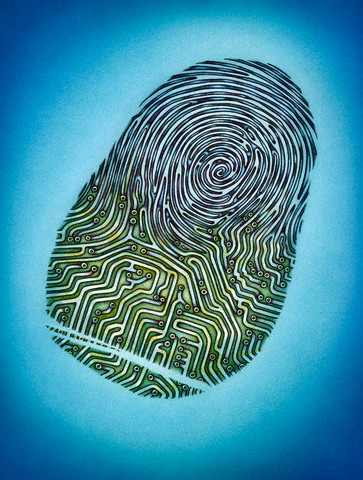Chip Makers Talk Smartphone Security Upgrades

Chip makers Qualcomm and Intel are looking for better ways of authenticating users for payments and other smartphone functions, and they’re talking up what they hope will be the next wave of user recognition this week at the Mobile World Congress in Barcelona, The Wall Street Journal reported.
In Qualcomm’s case, the focus is on a better fingerprint sensor. The current versions are essentially a high-resolution version of the same touchscreen technology that covers the rest of a smartphone’s face. But Qualcomm’s approach is ultrasonic imaging technology it calls Sense ID 3D that’s less susceptible to rubber copies of fingerprints — a frequent criticism of Apple’s Touch ID fingerprint sensor.
The ultrasonic imaging system, which comes with its own processor to assemble a three-dimensional image of the fingerprint, can also work through a phone’s screen or case, even if it’s made of made of metal. It should also be unaffected by scratches and other problems that can disable the current generation of capacitive print readers. Qualcomm said it already has samples of the sensors in the hands of phone makers, and expects the technology to be built into phones that ship later this year.
Qualcomm is also unveiling a technology it’s calling Zeroth, which uses a phone’s cameras and microphone to detect whether it recognizes the surroundings. That could be used to detect the theft of a device, the company said.
For its part, Intel is demonstrating authentication that leverages facial recognition through depth-sensing 3-D cameras (the same focus-correcting technology that the company is advertising in its latest TV commercial campaign). Intel also showed that at the Consumer Electronics Show in January, but at Mobile World Congress the chip maker is also unveiling a new line of processors specifically designed for the next generation of mobile phones, complete with built-in LTE radios.
While Intel’s face-checking tech is intended to replace passwords completely, that’s likely to take years. But the company also acquired PasswordBox, a digital identity service, in December. That functions as a secure lockbox for passwords, and could be set up to use the 3-D facial recognition as a key to release the passwords, for example.